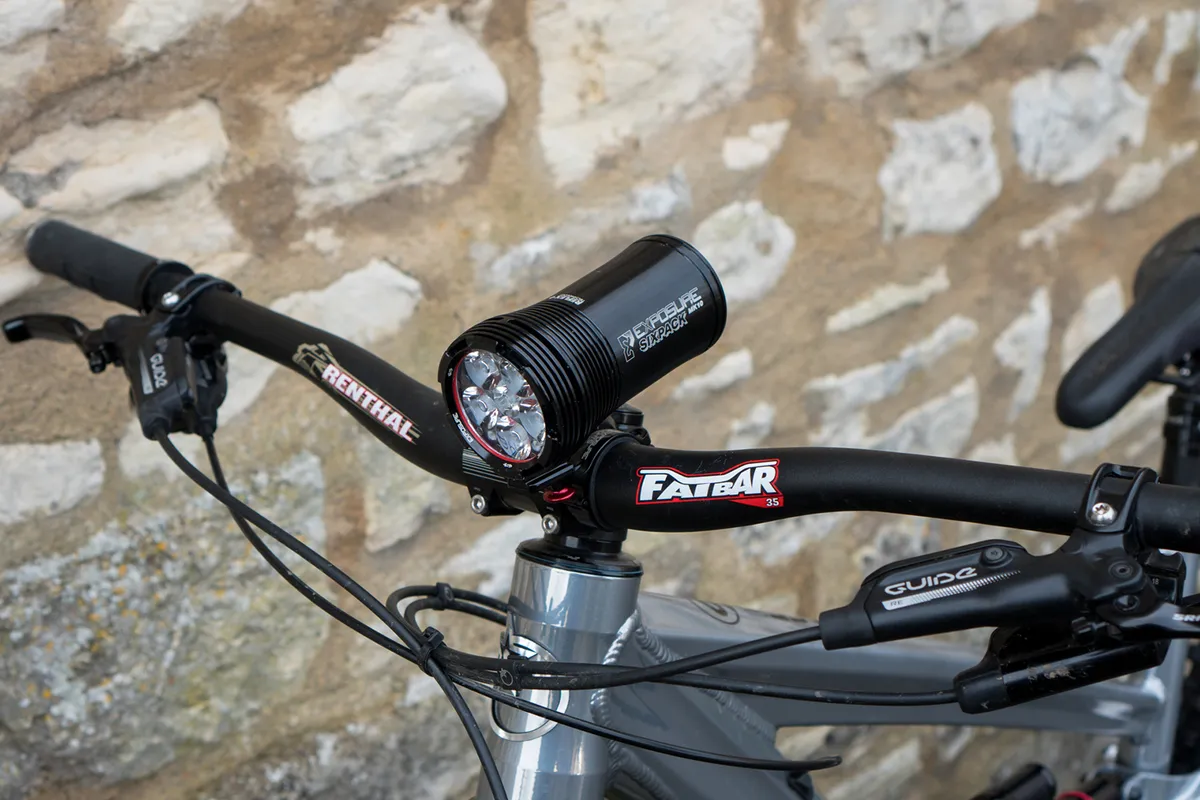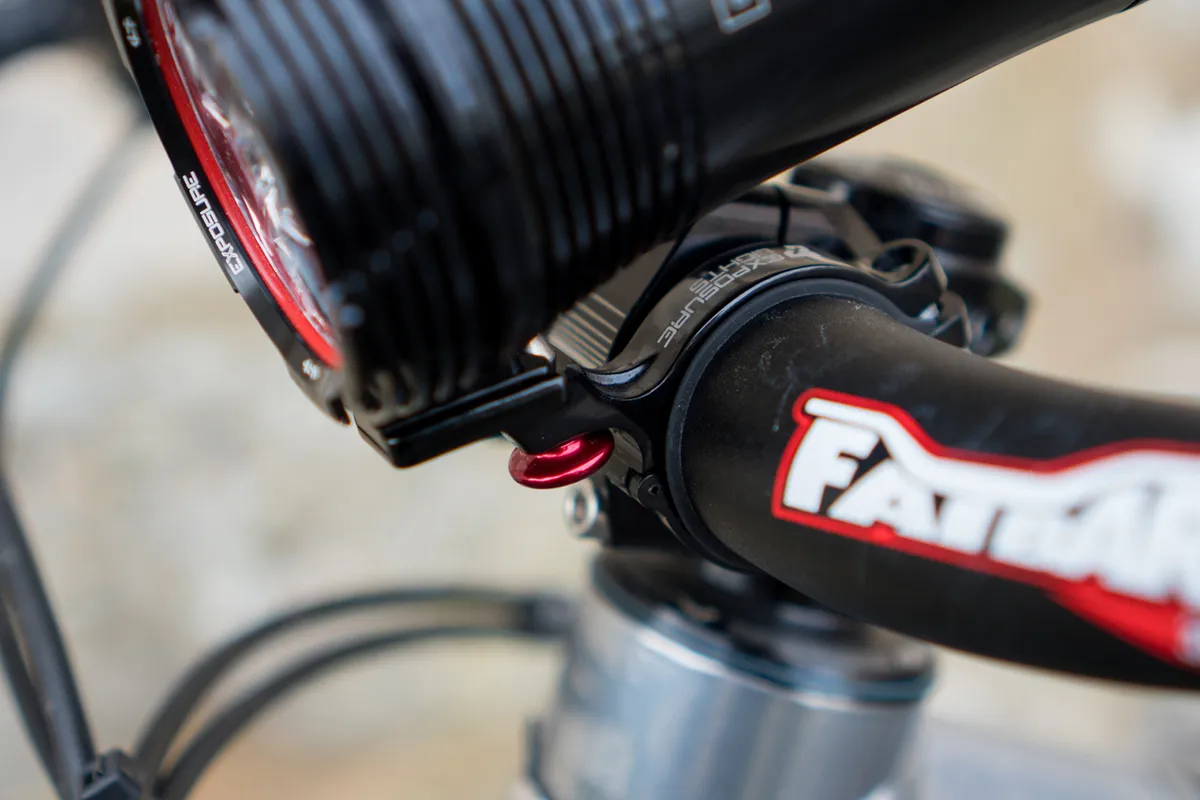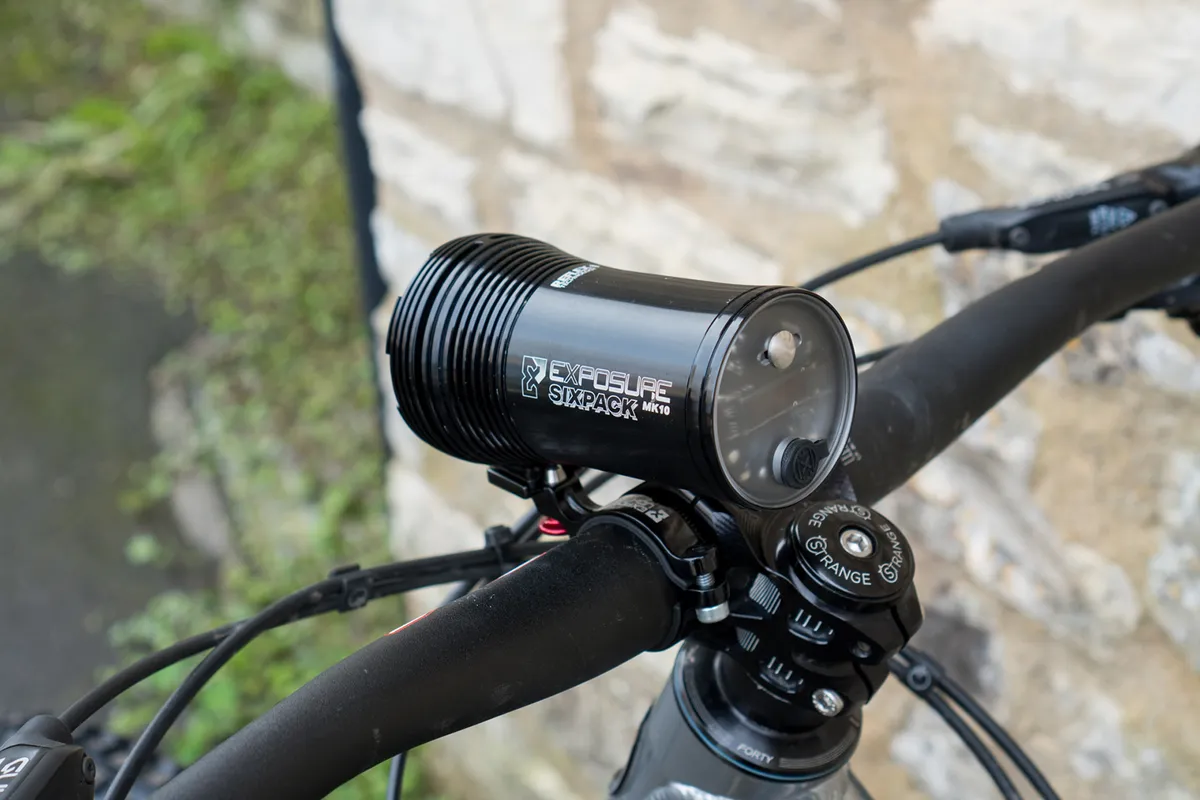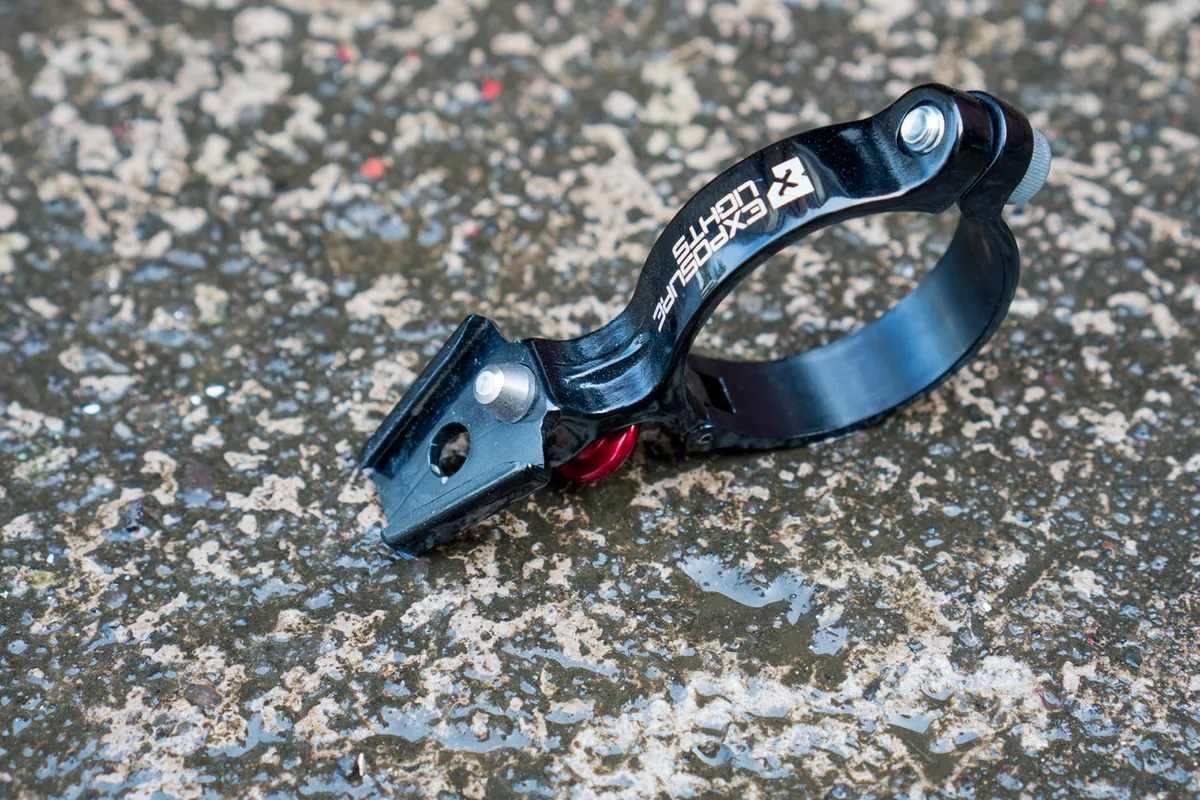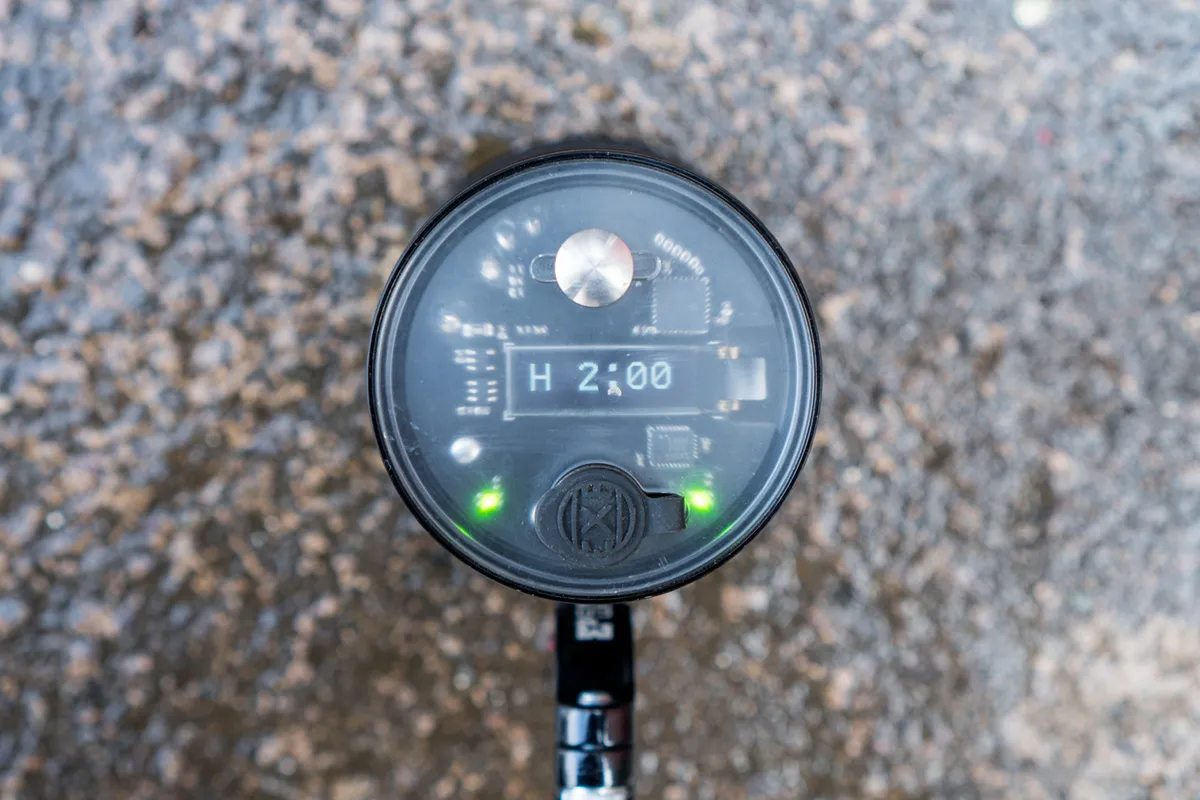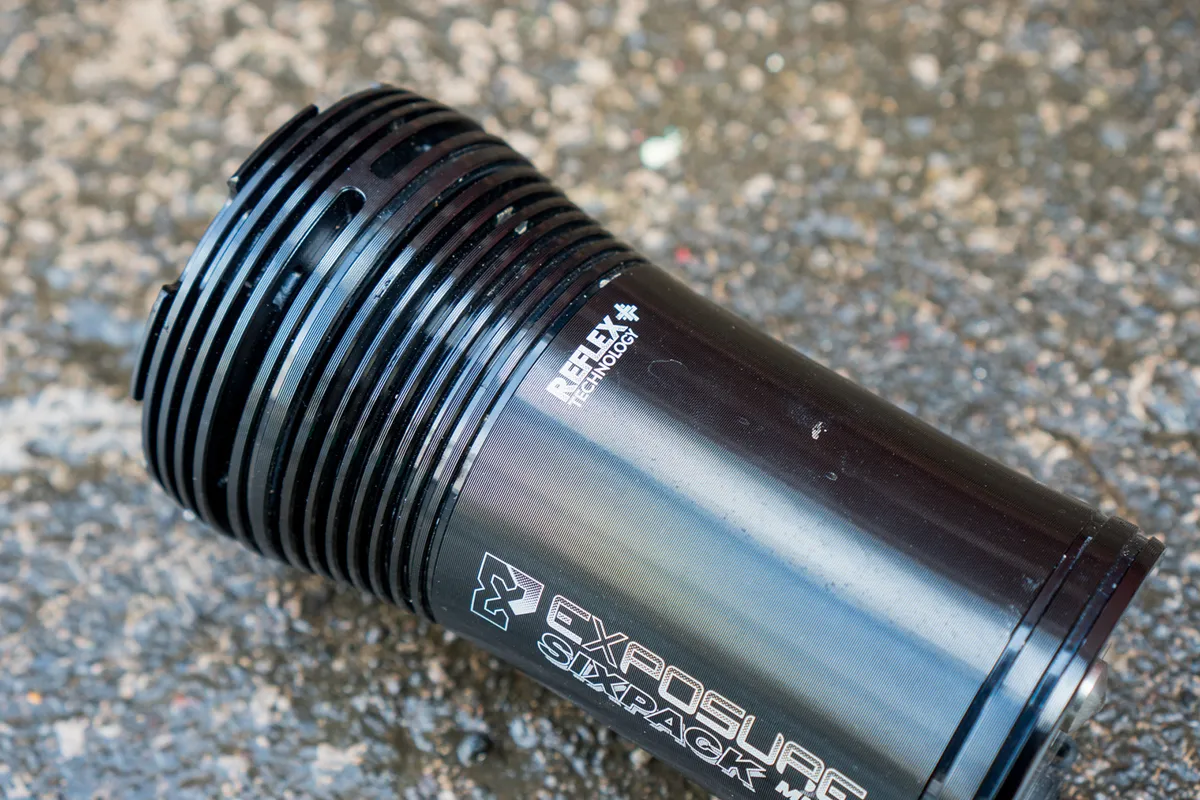Based in the south of the UK, Ultimate Sports Engineering, or USE, makes bike parts such as handlebars and droppers, lights and marine lights, and has recently updated its range-topping Six Pack, so how does it perform out in the woods?
Exposure Six Pack MK10 details and specification
With a whopping maximum claimed output of 5,000 lumens in Reflex mode or 3,600 in Constant mode, produced by six LEDs arranged in a pentagon with one central bulb, the Six Pack certainly has some impressive figures.
The light is an all-in-one design, combing both the LEDs and battery, and comes supplied with a single bar clamp that’s compatible with 31.8mm bars using a shim as well as 35mm bars. The single 4mm Allen key needed to tighten it is included.
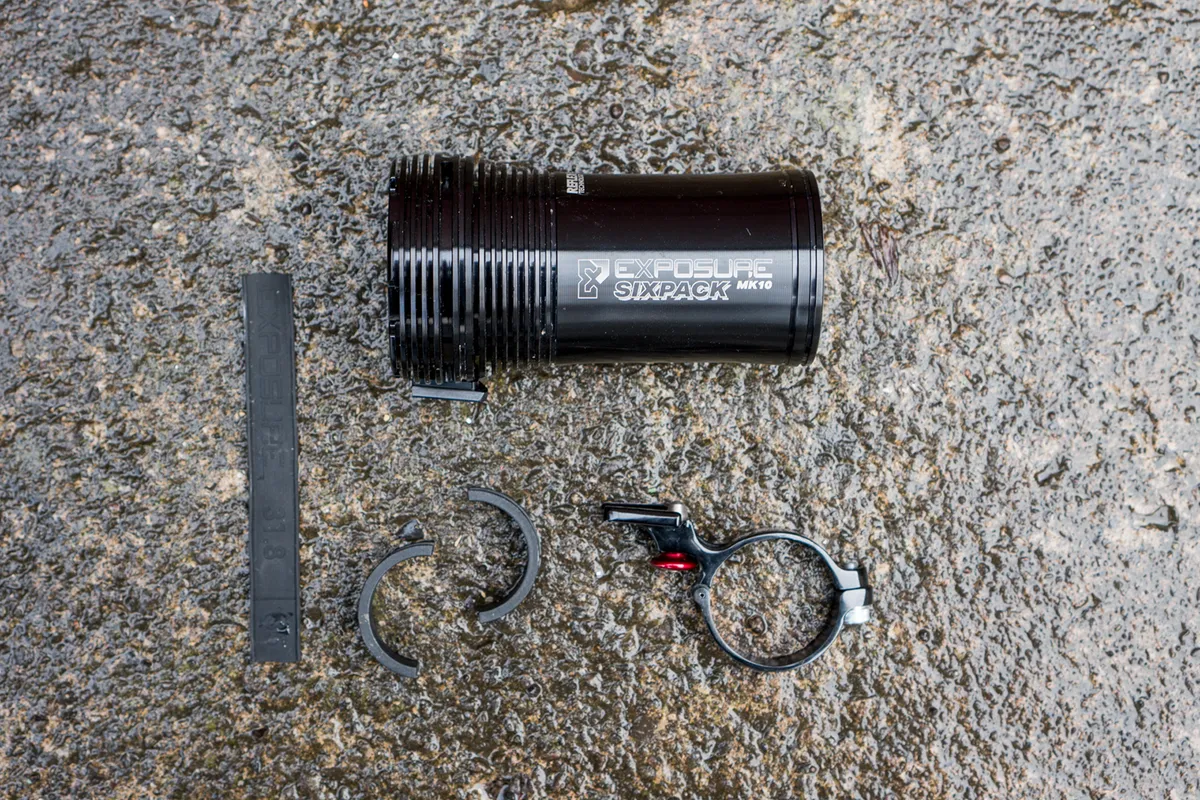
The light mounts to the clamp using a wedge-shaped slot with a sprung pin that drives the light’s corresponding wedge home. To release the light, the pin is pulled downwards.
There are three power modes — high, medium and low — but with 10 individual programmes the high mode isn’t always the brightest setting. The programmes and their run-times are laser-etched on to the underside of the light’s anodised 6063 aluminium body, should you need a reference.
The single metal button on the light's rear turns it on and selects and changes the modes. An OLED display provides information such as which mode and brightness level you’re in and how much run-time you’ve got left, and there are two coloured LEDs on the back of the light that change depending on how much battery life is remaining: green means it has between 100 and 50 per cent charge, amber 50 and 25 per cent, red 25 and 5 per cent and flashing red less than 5 per cent.

On start up, the battery indicator LEDs also tell you which brightness level the light is in: green for high, amber for medium and red for low.
The Six Pack’s Reflex mode means the light puts out up to 5,000 lumens in short bursts. The on-board tech detects when the light is moving over particularly rough terrain, upping its output appropriately for the detected conditions. There are three Reflex modes offering up to 12 hours of claimed run-time in the lowest setting.
The light can be charged using a dedicated wall plug or with the supplied USB socket from your laptop or USB plug, although USB charging will be slower.
Exposure Six Pack MK10 performance
The six LEDs emit plenty of on-trail power, but I didn’t think that they quite lived up to the 5,000 lumen claims. The spot lighting is impressively intense at its close-to-the-bike focal point and does flood into the distance ahead fairly well, too.
This close up focal point does mean that side-to-side illumination is limited and the cut-off between light and dark is pretty defined — it’s almost possible to trace the light’s cut-off with your eyes to the side of the light. This compromise is clearly at the benefit of the light’s forward flooding and long straight fireroads or trails are lit up exceptionally well.
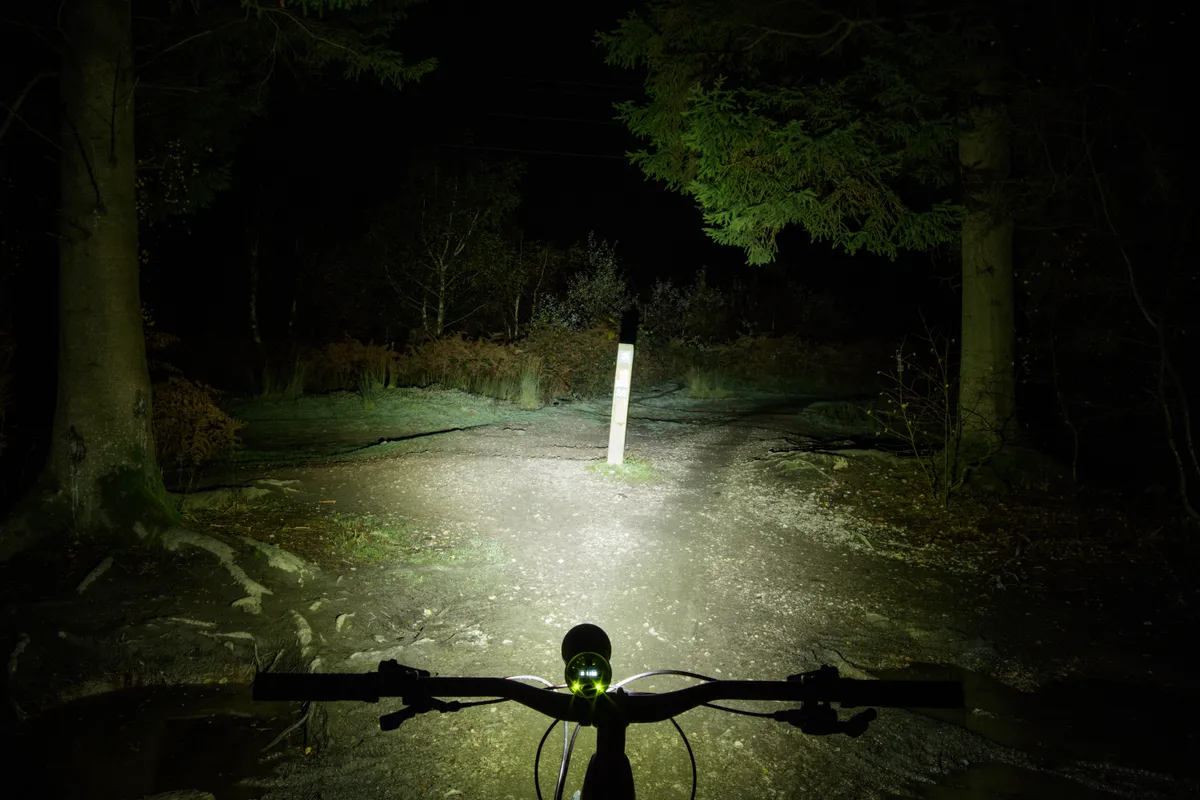
Because of the limited sideways spread, the light is better suited to faster, straighter trails. Slow technical ones shouldn’t be a problem, either, but it’s when you start entering switchbacks or successive turns that the width of the beam becomes an issue, making spotting lines on the exits of turns fairly tricky.
I'd normally expect this sort of beam pattern on head-mounted lights rather than bar mounted units.
A light with this many LEDs and claimed output could quite happily expend some forward periphery flooding to tackle the darkness either side of the rider. That said, shadows aren’t an issue and it gives solid downwards coverage that's most noticeable when the front wheel leaves the ground over jumps or as it gets picked up over undulations.
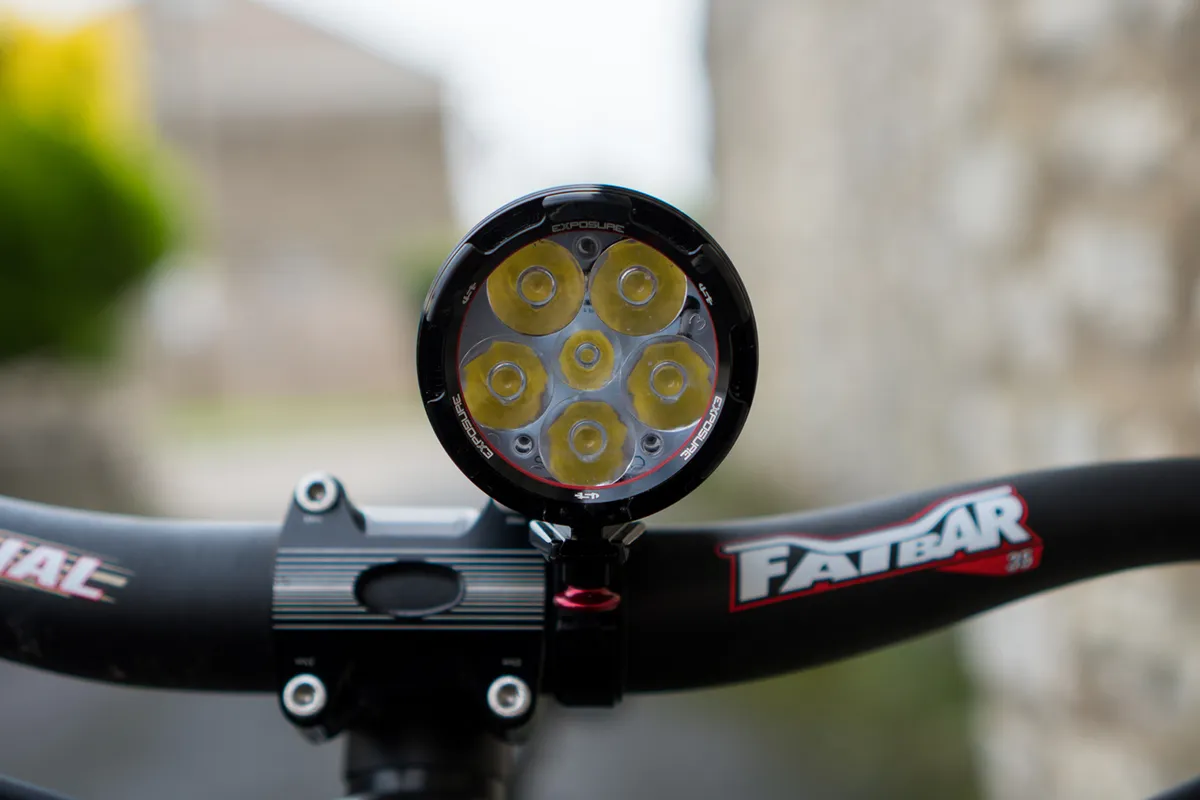
The LEDs' hue is quite white and offers great on-trail definition. The lack of bright blue in its beam is welcome, the whiter light being much kinder on the eyes making it easier to see what’s coming at you.
The clamping system is easy to use and mount to the bars with the single Allen bolt. The light is just as easy to attach to the clamp and removal is totally intuitive.
Despite the light’s visual bulk and relative high weight, it was impressively stable even over the roughest terrain I could find; not shaking, slipping or coming loose at all.
The Reflex mode is impressive and quickly detects movement, upping the light’s brightness to max exactly when you expect it.
Equally, the light didn’t suddenly drop its output in an inappropriate situation. I found using the light in this setting a great help, removing the need to even consider when you should and should not increase or decrease its output. This feature isn’t a gimmick and I'd like to see more companies adopting this kind of technology.
When not in Reflex programme one, I found programme four was the most suitable for my needs. In programme four on the high setting I managed to get 2 hours 40 minutes of run-time, a full 40 minutes longer than the light’s claimed endurance.
The OLED run-time display and corresponding coloured LED lights make it really easy to check how much battery life you’ve got left and which mode the light is in while you’re on the move.
Unlike the Reflex mode’s seamless execution, the light and its functions aren’t especially intuitive to use. A double push of the button to turn the light on or a long push to turn it off don’t feel natural. However, swat up on the relatively short instruction manual and using the light and its functions isn’t very challenging. It’s time well spent, too, because you’ll get the most from the light and its many modes when you know how to quickly and easily set it up.
Exposure Six Pack MK10 overall
The new Six Pack is laden with impressive technology that genuinely enhances your night riding experience by giving you more brain bandwidth to concentrate on riding rather than messing around with changing your light’s modes to eke out more battery life.
The display on the rear is a great feature but the beam’s spread lets the whole package down somewhat, especially considering the unit’s price — you’re unlikely to want to purchase an additional head-mounted light to see around turns once you’ve spent close to £500 / $600.
With the number of LEDs on the front of the light, I think USE could dedicate at least one to sideways illumination.
If you champion British-built lights with exceptional aftersales support, the Six Pack MK10 could well be for you.
How we tested
Testing lights objectively is a tough task. While it’s entirely possible to measure the number of lumens a light emits, there are a lot more variables that dictate how much of that light illuminates the trail. The colour of the light, its beam pattern and lens type have as much effect as the outright power.
With that in mind, we haven’t measured the number of lumens each light emits for this test. Instead, we’ve assessed how the light performs by describing the beam pattern, its colour and overall performance, while also measuring run time on the most powerful setting.
Product
| Brand | exposure |
| Price | 522.00 EUR,435.00 GBP,596.00 USD |
| Weight | 421.0000, GRAM () - Total weight |
Features
| br_lightType | front |
| br_remoteSwitch | no |
| br_integratedBattery | yes |
| Features | Clamp weight: 31g Light weight: 390g Run time: 2 hours 40 minutes (max power) |
| br_outputLumens | 5000 |

